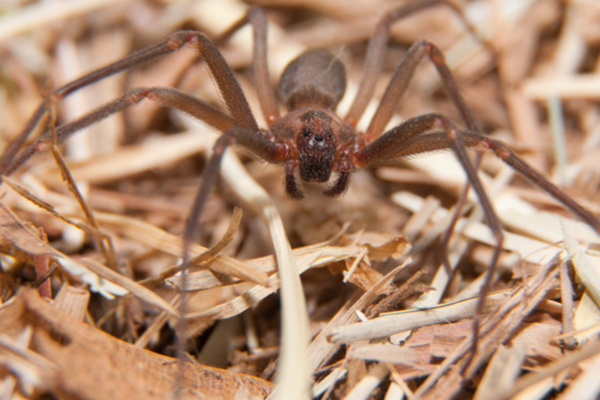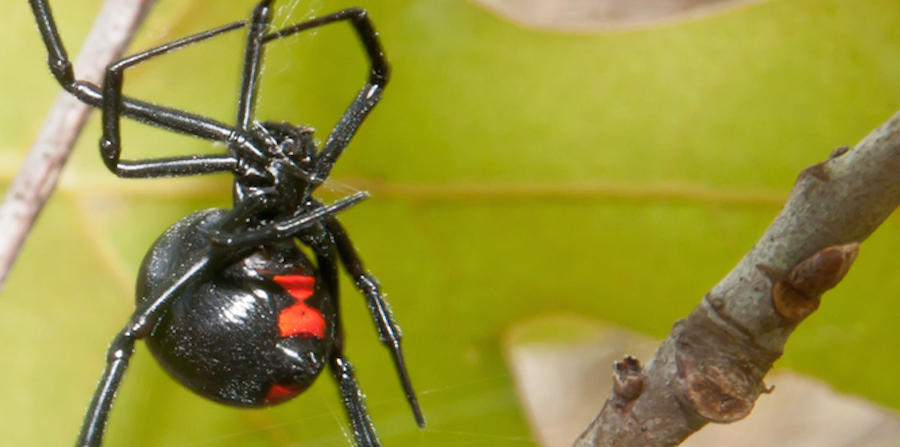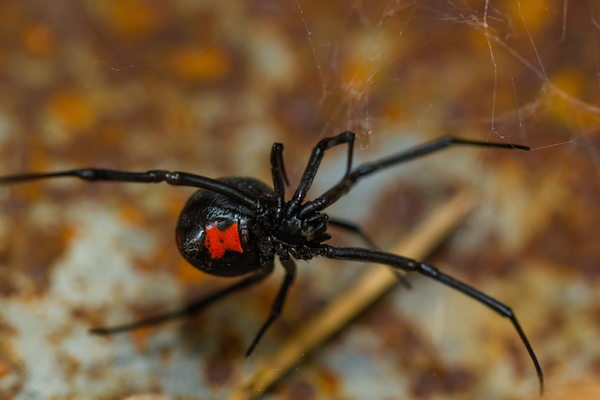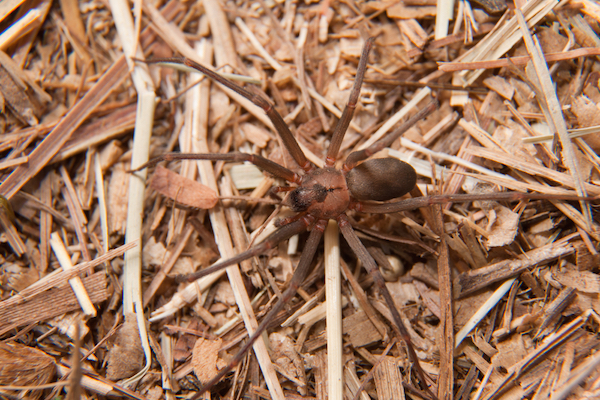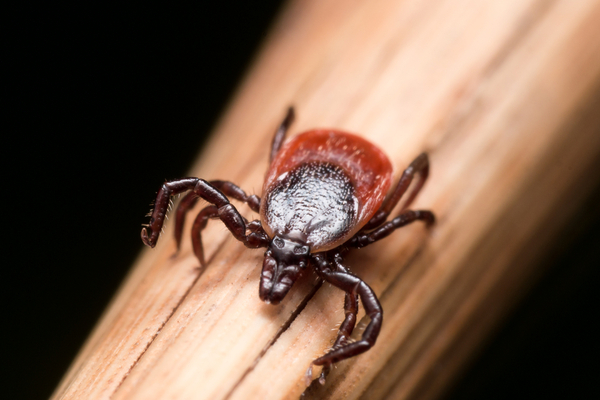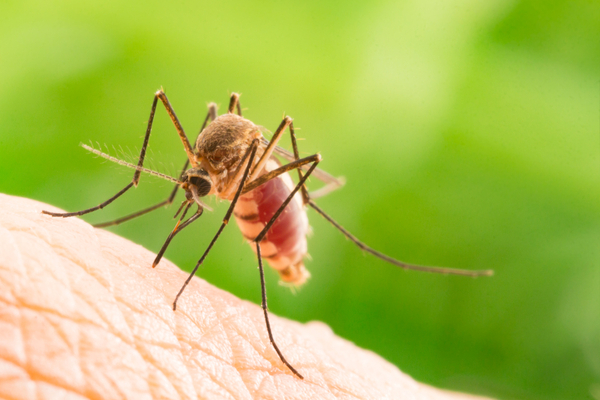The first thing you probably think whenever you see a weird-looking bug is “can that thing hurt me?” That momentary feeling of fear never really goes away (take it from us). When you see an insect (or spider, or wasp, etc.), you’ll probably freak out for a second. That’s ok! But if you learn what you’re looking at, you can also stop freaking out a second later.
We want to help you stop freaking out (because isn’t that what pest control is for, in the end?). That’s why we’re categorizing the freakiest bugs (and spiders, and wasps…) according to how both how dangerous they are and how painful their bites or stings are. Hopefully after reading this, you won’t feel quite as scared by the whatever-it-is you see on your porch. Well… after a second, at least.
Spiders
There are two medically-significant spiders in Michigan: the northern black widow (Latrodectus variolus) and the brown recluse (Loxosceles reclusa). These two spiders are venomous, and their bites are considered very dangerous. Northern black widow spiders are black with a prominent red, hourglass-shaped marking their abdomens. Brown recluse spiders are a uniform tan color with a darker, violin-shaped marking behind their heads. Northern black widows are native to Michigan and relatively common. Brown recluses are not.
Various other Michigan spider species may bite, but those bites are not serious and certainly not life-threatening. Black widow and brown recluse spiders are very rare, and even when they happen they are often not serious. These two spiders are both very shy by nature, and would always rather avoid conflict than lash out. If you see a northern black widow or brown recluse, keep your distance and remain calm. They will not hurt you unless they’re provoked.
The verdict:
Dangerous–YES, but it’s very unlikely.
Painful–YES, but, again, only if they bite you–which is very unlikely.
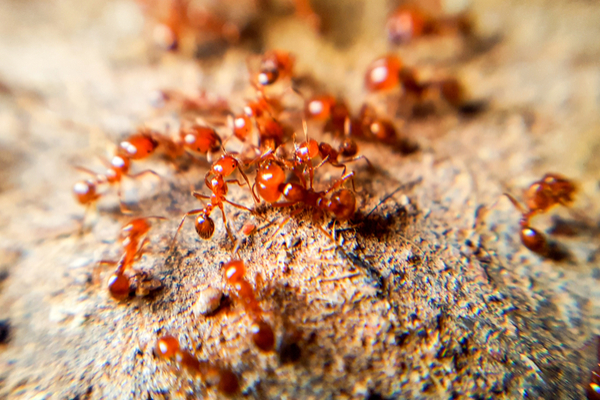
Ants
There are thousands of species of ants living in Michigan. Though some of Michigan’s ants (such as carpenter ants) are major nuisance pests, very few are dangerous. Even the flying ants that occasionally seem to swarm around structures aggressively won’t attack people. In fact, most ants lack the capability to attack humans, even if they wanted to (and they don’t). There are two ants that could potentially harm you if you encounter them: Fire ants and Velvet “ants.”
Fire ants are distributed in the southern US, but they are inconsistently reported in Michigan. These small, brown-red ants can be threatening because they have a stinger and occasionally use it on people. Fire ant stings contain a venom that may affect the nervous system or prompt an allergic reaction. Stings aren’t usually serious, but if one person is stung numerous times or has an intense allergic reaction they could be. Velvet ants aren’t actually an ant at all; they’re a species of wasp. Speaking of…
The verdict:
Dangerous–NO, except in very specific circumstances.
Painful–YES. A fire ant’s sting is about as painful as a common wasp’s.
Wasps
There are several species and subspecies of wasp and yellowjacket in Michigan. The most common wasps are the common paper wasp and european paper wasp. There are twelve species of yellow jacket in Michigan, including German yellow jackets, Eastern yellow jackets, and Baldfaced hornets. These wasps and hornets tend to resemble “classic” wasps as you’d recognize them. They have yellow-and-black striping, hard, almost metallic-looking bodies, and translucent wings. The bald faced hornet tends to have pale or white striping instead but otherwise looks similar.
Wasps are territorial and capable of delivering numerous painful stings, but these stings aren’t medically dangerous unless you’re allergic. In most cases, you shouldn’t be afraid of wasps, but you should remain aware of them. Wasps may also make nests near your property. Wasp nests are made of various plant debris stuck together and hung from awnings or rafters. Wasps may defend their nests rather aggressively. If you see a wasp’s nest near your home, do not approach it. Bee and wasp nest removal can be dangerous and should only be conducted by professionals.
The verdict:
Dangerous–NO, unless you’re allergic.
Painful–YES, wasp stings can be very painful, especially if they sting you multiple times.

Ticks
Unfortunately, ticks are very common in Michigan, especially in rural or forested areas. Ticks are most common during the summer, but they’re active in the spring and fall, as well. The most common Michigan ticks are the American dog tick, Blacklegged tick, lone star tick, and brown dog tick. Ticks feed on blood and find hosts by climbing bushes and then latching onto passerby. They feed by attaching to people and sucking blood for several hours.
Tick bites don’t generally hurt, though they may itch. Unfortunately, however, ticks are still probably the most legitimately dangerous pest on this list. Ticks can host and transmit several serious diseases to humans. The Blacklegged tick is one of the primary transmitters of lyme disease in Michigan. These ticks may also transmit Rocky Mountain spotted fever, tularemia, and more. Ticks don’t transmit a disease unless they’re attached to a host for 24 hours or more. If you find a tick on your body, remove it immediately.
The verdict:
Dangerous–YES. Although tickborne diseases are rare in Michigan, they are quite serious.
Painful–NO. You might not even notice a tick bite, which is part of the problem.
We may not ever “cure” your fear of creepy-crawlies, but hopefully this provided some context. While there are dangerous pests in Michigan, there’s also plenty you can do to prevent them from hurting you. Now that you know what to look for, you know what to avoid and when to get help.
We’re happy to be that happy, should you ever need it. If you have a pest problem, dangerous or otherwise, give Griffin a call anytime. We’ll help you stop freaking out–it’s what we do.

